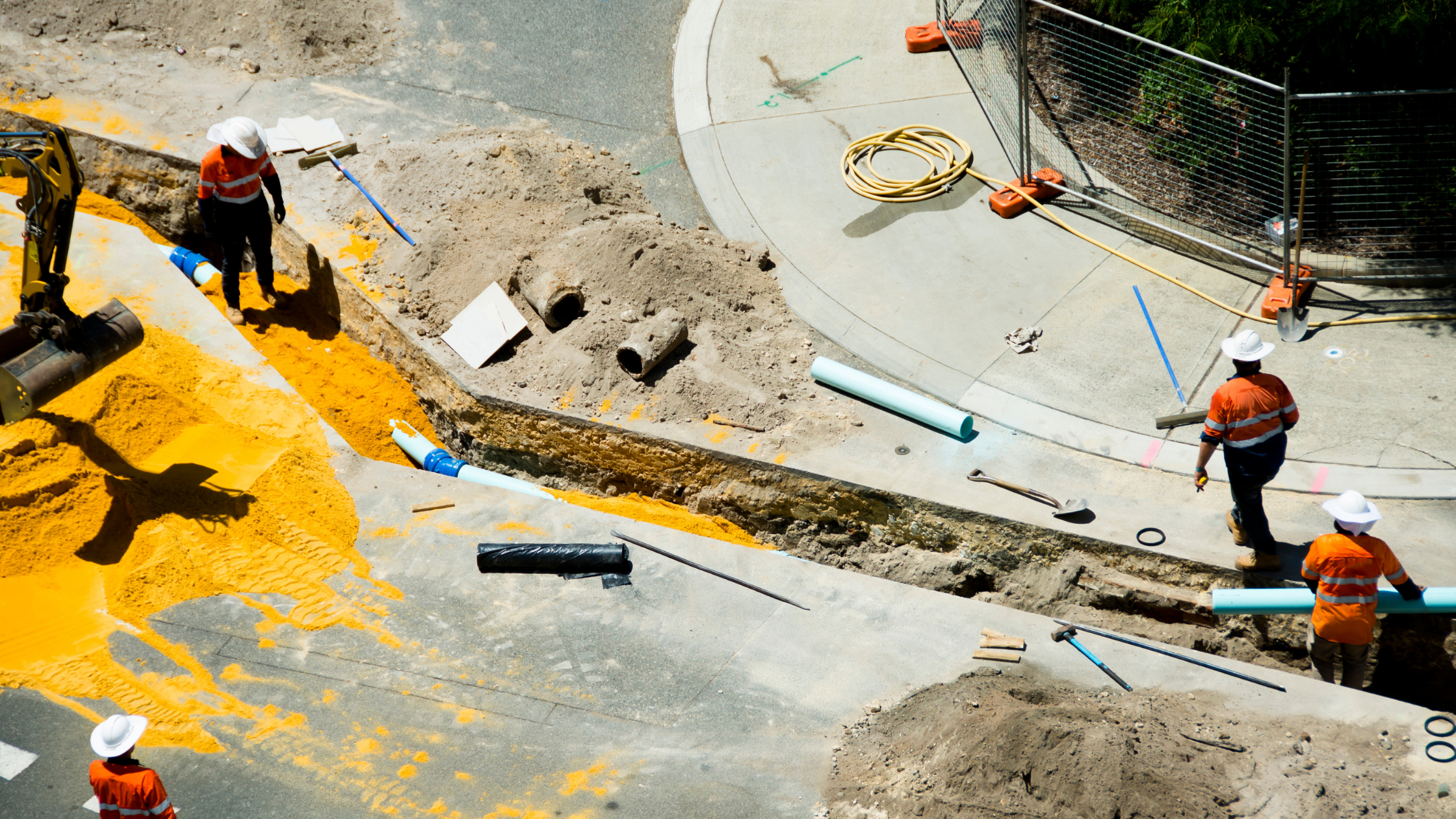
What the Aussie Government Infrastructure Program is and how it can help your business grow.
No one needs a reminder of the challenges of 2020, and with JobKeeper being phased out by March 2021, there is further concern about managing the costs of running a business in 2021. On the revenue side however, there is some case for optimism, at least for those SMEs involved in transport, civil engineering and road & rail construction.
One of the many responses from the Federal Australian Government to the COVID crisis was to increase spending on infrastructure. The amount of cash dedicated to infrastructure plans will therefore be raised to $110 billion from the already hefty amount of $100 billion, over the coming ten years.
The list of projects is extensive and comprises road and rail work in every State and Territory in Australia. Without question, there is a government sponsored infrastructure project underway near you, regardless if you live in the Sydney suburbs, Bunbury in Western Australia, or even near the Gulf of Carpentaria.
What is being built, and where?
The short answer is that a multitude of new roads are being built over many different parts of the country, and some rail projects as well. The list of major projects provided by the Department for Infrastructure sees 99 projects underway across all States and Territories, with a Federal Government contribution summing to just under $55 billion. And this list is by no means monopolised by one or two large projects.
Even if we disregard the two largest projects - the Western Sydney Airport rail link in NSW, and the Melbourne Airport rail link in Victoria (with a total of $10.19bn in dedicated funding) - this still leaves 97 major projects. And these 97 other projects have just under $45bn of the Federal Government budget. Add to this the State government contribution, and other sources of funding and it's clear that there is a lot of building going on.
These are projects as diverse as the Bunbury Outer Ring Road in WA ($682m), the Gawler Rail line electrification in South Australia ($220m) and the Ipswich motorway from Rocklea to Darra in Queensland ($200m), amongst many others.
Why spend all this money?
The A1 highway in New South Wales from Newcastle to the Queensland border provides the example of a project whose upgrade reveals many of the benefits of infrastructure projects. Upgrading the highway to a dual carriageway increases capacity, while also greatly improving safety. Bypasses also reduce heavy vehicle congestion in smaller towns and decrease travel time, in addition to improving the safety of local roads.
Other road projects, like the one planned for the Strzelecki Track, aim to reduce flood risk in certain areas, along with sealing parts of the road. Freight bridge upgrades in Tasmania improve freight productivity and road safety. And all of these projects offer support to both nationwide and local construction companies, as well as the associated suppliers to those companies.
Put simply, the government is getting Australian businesses to work by investing in productivity boosting roads and rail projects which is a great thing for the Australian economy.
What does it mean for my business?
The government typically engages the big infrastructure construction firms directly to complete these projects but that doesn't mean that Aussie SMEs need to miss out on the action.
Any given road and rail project goes through multiple stages, from planning to scoping, preliminary to detailed design, final design to acquisition. And this is all prior to being shovel ready. Then comes the actual construction, with its stage management, quality checks and variations.
Many of these steps involve sub-contractors and specialist service providers to support the big firms so SMEs and local communities can also get a big boost from these projects. As we will cover in our next blog, there is also a significant amount of infrastructure happening at the state and local government levels too so it's a good time to be in the civil infrastructure construction business.
Getting the job done
Although there is plenty of activity all around Australia, a concern for many of the subcontractors is that they won't have the resources to get the job done. And if you let down a big contractor once, it might be a while before they give you another opportunity. Equally, if your business is known to be reliable and can consistently deliver as promised, the work will keep flowing.
This means that having the necessary equipment available is critical. Many Aussie SMEs use equipment finance to fund machinery and vehicles to enable them to take on big projects without restricting working capital so they can keep the wheels turning.
Another popular way to boost working capital is to use an invoice finance service. Although winning big contracts from the major infrastructure players is good news, sometimes they're not the speediest when it comes to paying their invoices. And when you have fuel, repairs, materials and labour to pay for, cash flow can get tight so unlocking cash flow from your unpaid invoices can take the pressure off.
Earlypay specialises in providing finance to businesses involved in transport, civil engineering, road and rail construction so if you would like to learn more, please contact us at earlypay.com.au, call us on 1300 760 205 or contact your broker or BDM.
If you'd like to learn how Earlypay's Invoice Finance & Equipment Finance can help you boost your working capital to fund growth or keep on top of day-to-day operations of your business, contact Earlypay's helpful team today on 1300 760 205, visit our sign-up form or contact [email protected].